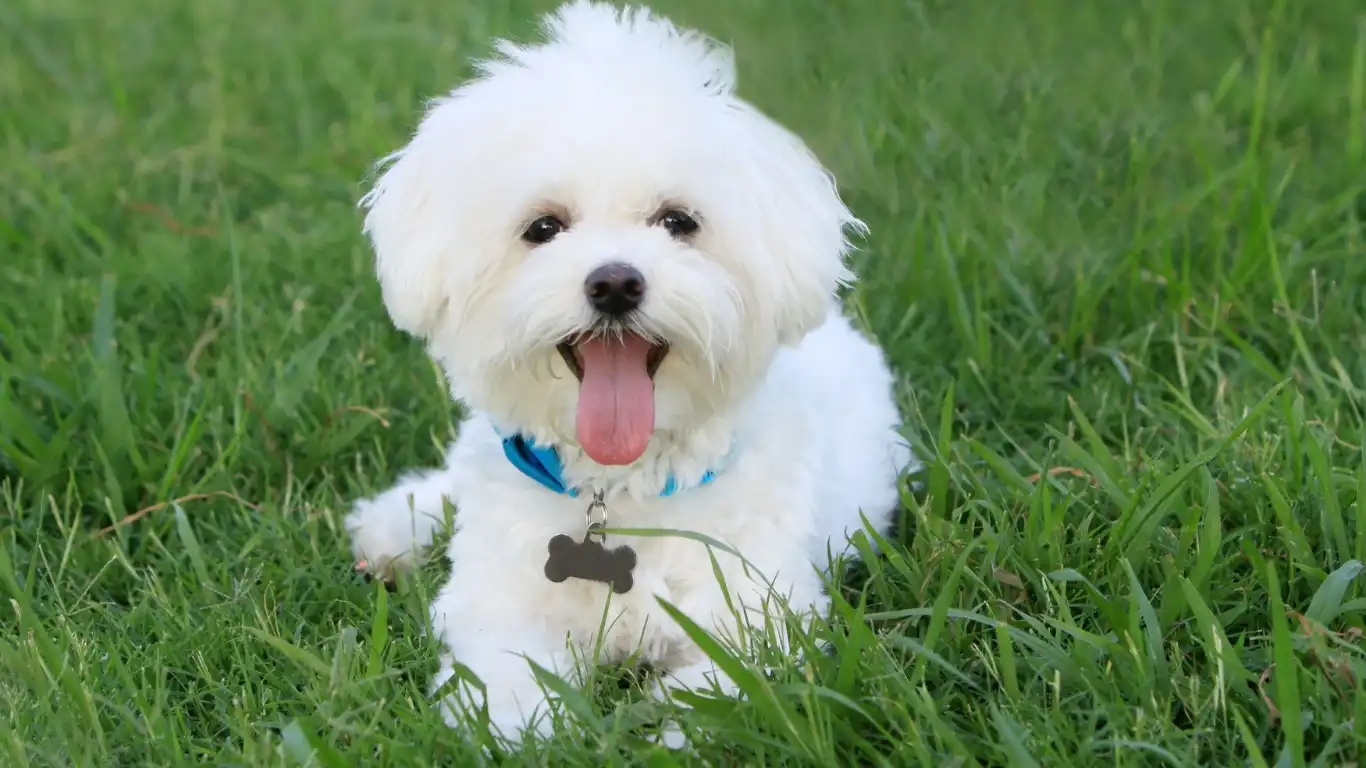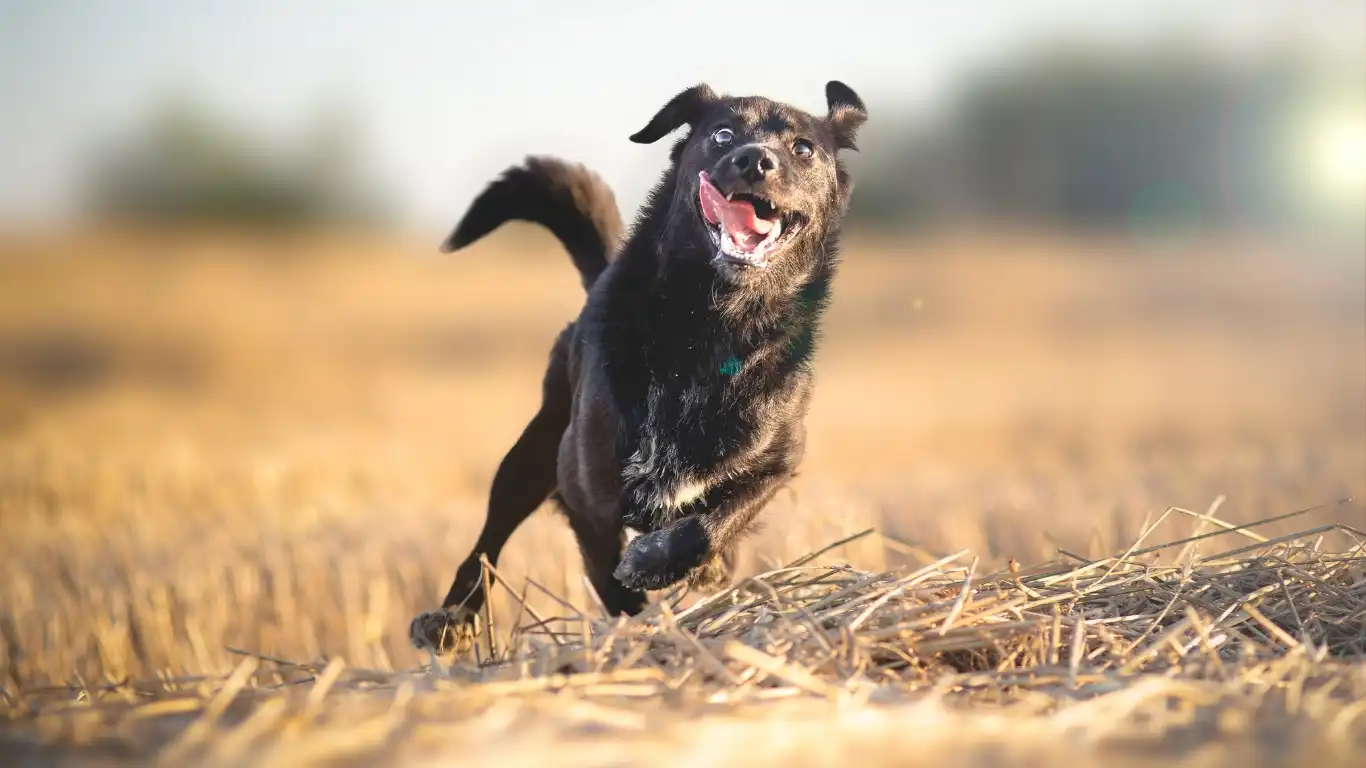How to Avoid Overstimulating a High-Energy Dog for Calm Behavior
If you’ve ever had a high-energy dog, you know how exciting—and sometimes exhausting—it can be to keep up with their endless enthusiasm. But here’s the thing: knowing how to avoid overstimulating a high-energy dog is key to helping them thrive without turning your home into a whirlwind of chaos. As a Veterinary Technician with a specialty in nutrition, I’ve seen firsthand how overstimulation can lead to behaviors that are challenging for both dogs and their humans. It’s not just about wearing them out with exercise; it’s about understanding their unique energy needs and giving them the right kind of outlets to stay balanced and happy.
Why Overstimulation Happens to High-Energy Dogs

Dogs with high energy levels often have an incredible zest for life, which is awesome! But that same spark can sometimes tip over into overstimulation, especially when their physical and mental needs aren’t met in harmony. From my experience, overstimulation usually occurs when a dog gets too much uncontrolled excitement or sensory input without proper breaks. This can happen during playtime, walks, or even when visitors arrive at the door.
It’s easy to think that the answer is “more exercise, more play!”—and while physical activity is essential, it’s just one piece of the puzzle. Overstimulated dogs can exhibit behaviors like:
- Jumping excessively
- Excessive barking or whining
- Destructive chewing or digging
- Restlessness or inability to settle down
- Signs of stress such as panting or pacing
Understanding these signs early on is crucial. When you spot them, it’s a red flag that your dog’s excitement has crossed the line into overstimulation, and it’s time to take action.
How to Avoid Overstimulating a High-Energy Dog: Smart Strategies That Work

1. Recognize Your Dog’s Unique Energy Style
Not all high-energy dogs are created equal. Some need a burst of fast-paced exercise, while others might require more mental challenges to stay satisfied. Early in my career, I worked with a handful of breeds famous for their stamina—Border Collies, Australian Shepherds, and Jack Russells. What I learned is that these dogs thrive when their activity matches their brain power. So instead of throwing more balls for fetch endlessly, I recommend mixing physical activity with mental exercises like puzzle toys or scent work.
2. Create Structured Play Sessions
One thing that’s helped many clients I’ve advised is setting up clear start and stop points during playtime. When playtime is unpredictable and continuous, dogs tend to escalate their energy to an uncontrollable level. Try breaking play into timed sessions—say, 10 to 15 minutes—and end on a calm note with a treat or a gentle petting session. This helps your dog understand when it’s time to be active and when to relax.
3. Use Calming Techniques During Exciting Moments
Doors opening, visitors arriving, or even a car pulling into the driveway can send a high-energy dog into a frenzy. From my experience working in clinics, simple calming cues can work wonders. Try teaching your dog a “settle” command or use a favorite chew toy to redirect their focus. Sometimes, just lowering your own energy and speaking softly can help your pup dial down their excitement too.
Incorporating Mental Stimulation to Balance Energy

From my years working alongside dogs and their families, I can’t stress enough how vital mental stimulation is when learning how to avoid overstimulating a high-energy dog. Physical exercise alone doesn’t always cut it. Sometimes, a dog is physically tired but mentally wired, which can lead to those frustrating moments where they bounce off the walls despite a long walk.
Incorporating brain games and challenges into your dog’s routine does more than just burn off energy—it builds confidence, reduces anxiety, and strengthens your bond. Some of my favorite mental enrichment ideas include:
- Interactive puzzle toys: These get your dog thinking and problem-solving while rewarding them with treats.
- Scent work: Hide treats or toys around the house or yard and let your dog sniff them out. This taps into their natural instincts and can be surprisingly tiring!
- Training new tricks: Teaching something new, even a simple “shake” or “roll over,” engages their brain and keeps them focused.
When I worked in a veterinary clinic, one client’s hyperactive Labrador really benefited from regular scent games. After just a few weeks, she was noticeably calmer and more eager to relax after playtime. The key is mixing up these activities so your dog never gets bored and always has something interesting to do.
Setting a Calm Environment to Prevent Overstimulation

Sometimes, the best way to avoid overstimulation is by managing the environment your dog lives in. In my experience, dogs pick up on all kinds of sensory input—sounds, smells, visual cues—and if things get too intense, even the calmest pups can become overwhelmed. This is especially true for high-energy dogs who are more sensitive to their surroundings.
A few practical tips that have helped clients and their dogs include:
- Create quiet zones: Designate a comfy, low-traffic space where your dog can retreat when they need downtime.
- Manage noise levels: Loud TV, vacuum cleaners, or doorbells can add to sensory overload. Consider white noise machines or calming music to help mask harsh sounds.
- Routine is your friend: Predictability helps dogs feel secure. Regular feeding, walking, and play schedules reduce anxiety and hyperactivity.
I recall one particular dog who used to become frantic whenever the doorbell rang. By pairing that sound with a calm cue and redirecting him to his quiet zone, his anxiety eased dramatically over time. This approach requires patience but is incredibly effective.
Nutrition’s Role in Managing High Energy and Overstimulation

As a Veterinary Technician specialized in nutrition, I can’t leave out how much what your dog eats influences their energy levels and mood. Overstimulated dogs might sometimes react to dietary factors—like excess sugars, fillers, or imbalanced nutrients—that make their nervous system more excitable.
Choosing the right diet tailored to your dog’s age, breed, and activity level can help smooth out those peaks of hyperactivity. For example, I’ve seen many dogs benefit from:
- Diets rich in omega-3 fatty acids: These support brain health and reduce inflammation, helping to calm an excitable nervous system.
- Balanced protein and carbs: Keeping energy steady throughout the day prevents sudden bursts of uncontrollable excitement.
- Avoiding artificial additives: Some dogs are sensitive to certain dyes or preservatives that can trigger hyperactive behavior.
When advising clients, I always emphasize the importance of working with a veterinarian or nutritionist to customize meal plans, especially for high-energy dogs. It’s about fueling their bodies properly so their minds can stay clear and calm.
Practical Tips for Owners: Staying Consistent and Patient
One of the biggest challenges with high-energy dogs is maintaining consistency—both in training and daily routines. From my hands-on experience, the dogs that make the best progress are those whose owners stay patient and persistent, even when things get tough.
Here are some tips I often share with dog parents:
- Keep training sessions short but frequent: This helps your dog stay engaged without feeling overwhelmed.
- Celebrate small wins: Even a few seconds of calm behavior deserves a treat and praise.
- Use positive reinforcement: Avoid harsh punishments, which can increase anxiety and worsen overstimulation.
- Know when to seek professional help: If your dog’s energy feels impossible to manage, a trainer or behaviorist can offer personalized strategies.
Personally, I’ve seen amazing transformations when owners take the time to learn their dog’s signals and adjust their routines accordingly. It’s a journey, but totally worth the effort!
Exercise Tips to Burn Off Energy Without Overstimulating

One thing I’ve learned over my years as a Veterinary Technician is that exercise for high-energy dogs isn’t just about quantity—it’s about quality and timing. You want your dog to get enough physical activity to feel satisfied, but without pushing them into that hyperactive, overstimulated zone that can backfire. It’s a delicate balance, but totally doable once you understand your dog’s rhythm.
For instance, a fast-paced game of fetch is fantastic, but if you play for 30 minutes nonstop, you might notice your dog starts to lose focus or even become a bit frantic. I usually recommend breaking exercise into multiple short bursts rather than one marathon session. This keeps your dog engaged and helps prevent the energy from spiraling out of control.
Another personal tip? Mix in low-impact activities like swimming or gentle leash walks. Swimming is great because it’s easy on joints but still burns lots of energy. Plus, many dogs find the water calming, which helps reduce overstimulation naturally.
Don’t forget, every dog is unique. I remember one high-energy Aussie who loved long hikes, but after a certain point, he’d get too wired to settle down. Adjusting his daily routine with shorter, more frequent outings made a huge difference in his behavior at home.
Using Routine and Predictability to Keep Your Dog Grounded

Dogs, especially those with high energy, thrive on routine. Knowing what to expect throughout the day helps them stay calm and confident. In my experience, unpredictable schedules often lead to anxiety and overstimulation because the dog feels “on edge,” unsure of when they’ll get to burn off energy or when to relax.
Setting a consistent daily routine for feeding, exercise, training, and rest creates a rhythm that your dog can anticipate and rely on. This predictability is soothing and reduces the chances of your dog becoming overwhelmed. Even small details count, like feeding at the same times or taking walks around the same time each day.
I’ve worked with clients who struggled with their dogs’ hyperactivity until they established a structured day. Not only did their dogs behave better, but the owners felt less stressed too. It’s a win-win situation.
Recognizing When Professional Support Is Needed
While many strategies to avoid overstimulation can be handled at home, sometimes it’s important to know when to call in the pros. Dogs with extreme energy levels or behavior challenges may need the expertise of a professional trainer or veterinary behaviorist. Don’t hesitate to reach out if your dog’s excitement turns into anxiety, aggression, or destructiveness that you can’t manage on your own.
Throughout my career, I’ve collaborated with trainers and vets to create customized behavior plans that combine training, enrichment, and sometimes medical support. This multidisciplinary approach really helps dogs who struggle with regulating their energy and emotions.
If you’re unsure whether your dog needs extra help, some signs to watch for include:
- Persistent inability to calm down after exercise or stimulation
- Destructive behavior that damages property or hurts the dog
- Signs of stress like excessive drooling, trembling, or aggressive barking
Getting a professional assessment early can save both you and your dog a lot of frustration and create a happier home environment.
Wrapping Up the Journey: Your Role as a Patient, Observant Owner
The truth is, learning how to avoid overstimulating a high-energy dog takes time, patience, and lots of observation. No two dogs are the same, and what works for one might not work for another. Throughout my work as a Veterinary Technician, I’ve found that the best outcomes come from owners who are willing to tune into their dog’s signals and adjust routines with care.
Celebrate the small wins, be flexible, and remember that your dog isn’t trying to be “difficult”—they’re just expressing their needs the best way they know how. With the right balance of exercise, mental challenges, calm environments, and proper nutrition, you can help your furry friend channel their energy in positive ways that benefit both of you.
References
- American Veterinary Medical Association (AVMA)
- American Society for the Prevention of Cruelty to Animals (ASPCA)
- AVMA Nutrition Resources
- Cesar’s Way – Dog Training & Behavior
Disclaimer
This article is for informational purposes only and does not replace professional veterinary advice. Always consult your veterinarian or a qualified animal behaviorist for personalized guidance regarding your dog’s health and behavior. Every dog is unique, and what works for one may not be suitable for another.





